HSBC 2008 Annual Report Download - page 21
Download and view the complete annual report
Please find page 21 of the 2008 HSBC annual report below. You can navigate through the pages in the report by either clicking on the pages listed below, or by using the keyword search tool below to find specific information within the annual report.-
 1
1 -
 2
2 -
 3
3 -
 4
4 -
 5
5 -
 6
6 -
 7
7 -
 8
8 -
 9
9 -
 10
10 -
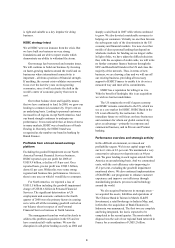 11
11 -
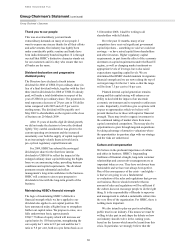 12
12 -
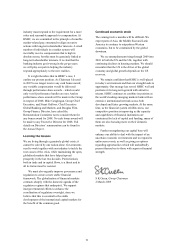 13
13 -
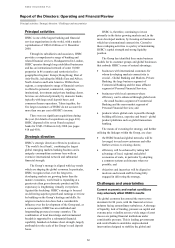 14
14 -
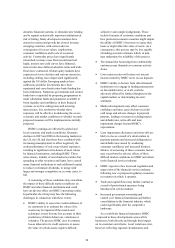 15
15 -
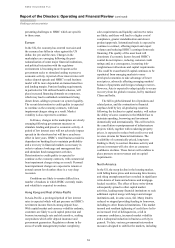 16
16 -
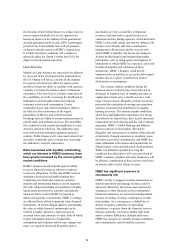 17
17 -
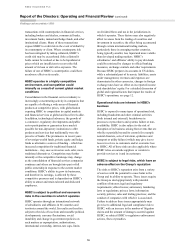 18
18 -
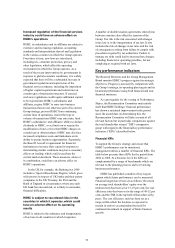 19
19 -
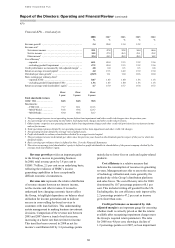 20
20 -
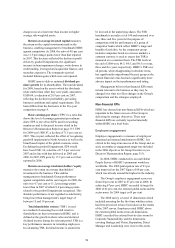 21
21 -
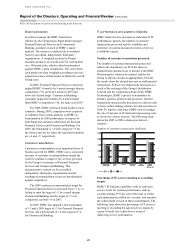 22
22 -
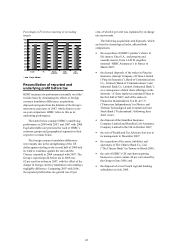 23
23 -
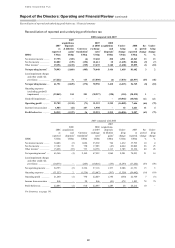 24
24 -
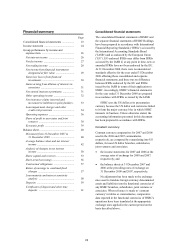 25
25 -
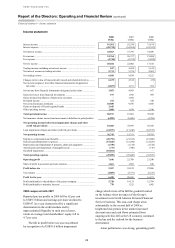 26
26 -
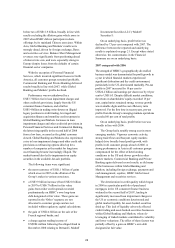 27
27 -
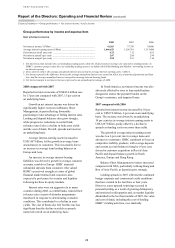 28
28 -
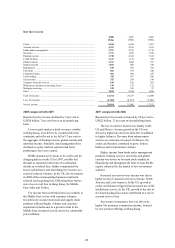 29
29 -
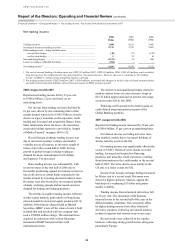 30
30 -
 31
31 -
 32
32 -
 33
33 -
 34
34 -
 35
35 -
 36
36 -
 37
37 -
 38
38 -
 39
39 -
 40
40 -
 41
41 -
 42
42 -
 43
43 -
 44
44 -
 45
45 -
 46
46 -
 47
47 -
 48
48 -
 49
49 -
 50
50 -
 51
51 -
 52
52 -
 53
53 -
 54
54 -
 55
55 -
 56
56 -
 57
57 -
 58
58 -
 59
59 -
 60
60 -
 61
61 -
 62
62 -
 63
63 -
 64
64 -
 65
65 -
 66
66 -
 67
67 -
 68
68 -
 69
69 -
 70
70 -
 71
71 -
 72
72 -
 73
73 -
 74
74 -
 75
75 -
 76
76 -
 77
77 -
 78
78 -
 79
79 -
 80
80 -
 81
81 -
 82
82 -
 83
83 -
 84
84 -
 85
85 -
 86
86 -
 87
87 -
 88
88 -
 89
89 -
 90
90 -
 91
91 -
 92
92 -
 93
93 -
 94
94 -
 95
95 -
 96
96 -
 97
97 -
 98
98 -
 99
99 -
 100
100 -
 101
101 -
 102
102 -
 103
103 -
 104
104 -
 105
105 -
 106
106 -
 107
107 -
 108
108 -
 109
109 -
 110
110 -
 111
111 -
 112
112 -
 113
113 -
 114
114 -
 115
115 -
 116
116 -
 117
117 -
 118
118 -
 119
119 -
 120
120 -
 121
121 -
 122
122 -
 123
123 -
 124
124 -
 125
125 -
 126
126 -
 127
127 -
 128
128 -
 129
129 -
 130
130 -
 131
131 -
 132
132 -
 133
133 -
 134
134 -
 135
135 -
 136
136 -
 137
137 -
 138
138 -
 139
139 -
 140
140 -
 141
141 -
 142
142 -
 143
143 -
 144
144 -
 145
145 -
 146
146 -
 147
147 -
 148
148 -
 149
149 -
 150
150 -
 151
151 -
 152
152 -
 153
153 -
 154
154 -
 155
155 -
 156
156 -
 157
157 -
 158
158 -
 159
159 -
 160
160 -
 161
161 -
 162
162 -
 163
163 -
 164
164 -
 165
165 -
 166
166 -
 167
167 -
 168
168 -
 169
169 -
 170
170 -
 171
171 -
 172
172 -
 173
173 -
 174
174 -
 175
175 -
 176
176 -
 177
177 -
 178
178 -
 179
179 -
 180
180 -
 181
181 -
 182
182 -
 183
183 -
 184
184 -
 185
185 -
 186
186 -
 187
187 -
 188
188 -
 189
189 -
 190
190 -
 191
191 -
 192
192 -
 193
193 -
 194
194 -
 195
195 -
 196
196 -
 197
197 -
 198
198 -
 199
199 -
 200
200 -
 201
201 -
 202
202 -
 203
203 -
 204
204 -
 205
205 -
 206
206 -
 207
207 -
 208
208 -
 209
209 -
 210
210 -
 211
211 -
 212
212 -
 213
213 -
 214
214 -
 215
215 -
 216
216 -
 217
217 -
 218
218 -
 219
219 -
 220
220 -
 221
221 -
 222
222 -
 223
223 -
 224
224 -
 225
225 -
 226
226 -
 227
227 -
 228
228 -
 229
229 -
 230
230 -
 231
231 -
 232
232 -
 233
233 -
 234
234 -
 235
235 -
 236
236 -
 237
237 -
 238
238 -
 239
239 -
 240
240 -
 241
241 -
 242
242 -
 243
243 -
 244
244 -
 245
245 -
 246
246 -
 247
247 -
 248
248 -
 249
249 -
 250
250 -
 251
251 -
 252
252 -
 253
253 -
 254
254 -
 255
255 -
 256
256 -
 257
257 -
 258
258 -
 259
259 -
 260
260 -
 261
261 -
 262
262 -
 263
263 -
 264
264 -
 265
265 -
 266
266 -
 267
267 -
 268
268 -
 269
269 -
 270
270 -
 271
271 -
 272
272 -
 273
273 -
 274
274 -
 275
275 -
 276
276 -
 277
277 -
 278
278 -
 279
279 -
 280
280 -
 281
281 -
 282
282 -
 283
283 -
 284
284 -
 285
285 -
 286
286 -
 287
287 -
 288
288 -
 289
289 -
 290
290 -
 291
291 -
 292
292 -
 293
293 -
 294
294 -
 295
295 -
 296
296 -
 297
297 -
 298
298 -
 299
299 -
 300
300 -
 301
301 -
 302
302 -
 303
303 -
 304
304 -
 305
305 -
 306
306 -
 307
307 -
 308
308 -
 309
309 -
 310
310 -
 311
311 -
 312
312 -
 313
313 -
 314
314 -
 315
315 -
 316
316 -
 317
317 -
 318
318 -
 319
319 -
 320
320 -
 321
321 -
 322
322 -
 323
323 -
 324
324 -
 325
325 -
 326
326 -
 327
327 -
 328
328 -
 329
329 -
 330
330 -
 331
331 -
 332
332 -
 333
333 -
 334
334 -
 335
335 -
 336
336 -
 337
337 -
 338
338 -
 339
339 -
 340
340 -
 341
341 -
 342
342 -
 343
343 -
 344
344 -
 345
345 -
 346
346 -
 347
347 -
 348
348 -
 349
349 -
 350
350 -
 351
351 -
 352
352 -
 353
353 -
 354
354 -
 355
355 -
 356
356 -
 357
357 -
 358
358 -
 359
359 -
 360
360 -
 361
361 -
 362
362 -
 363
363 -
 364
364 -
 365
365 -
 366
366 -
 367
367 -
 368
368 -
 369
369 -
 370
370 -
 371
371 -
 372
372 -
 373
373 -
 374
374 -
 375
375 -
 376
376 -
 377
377 -
 378
378 -
 379
379 -
 380
380 -
 381
381 -
 382
382 -
 383
383 -
 384
384 -
 385
385 -
 386
386 -
 387
387 -
 388
388 -
 389
389 -
 390
390 -
 391
391 -
 392
392 -
 393
393 -
 394
394 -
 395
395 -
 396
396 -
 397
397 -
 398
398 -
 399
399 -
 400
400 -
 401
401 -
 402
402 -
 403
403 -
 404
404 -
 405
405 -
 406
406 -
 407
407 -
 408
408 -
 409
409 -
 410
410 -
 411
411 -
 412
412 -
 413
413 -
 414
414 -
 415
415 -
 416
416 -
 417
417 -
 418
418 -
 419
419 -
 420
420 -
 421
421 -
 422
422 -
 423
423 -
 424
424 -
 425
425 -
 426
426 -
 427
427 -
 428
428 -
 429
429 -
 430
430 -
 431
431 -
 432
432 -
 433
433 -
 434
434 -
 435
435 -
 436
436 -
 437
437 -
 438
438 -
 439
439 -
 440
440 -
 441
441 -
 442
442 -
 443
443 -
 444
444 -
 445
445 -
 446
446 -
 447
447 -
 448
448 -
 449
449 -
 450
450 -
 451
451 -
 452
452 -
 453
453 -
 454
454 -
 455
455 -
 456
456 -
 457
457 -
 458
458 -
 459
459 -
 460
460 -
 461
461 -
 462
462 -
 463
463 -
 464
464 -
 465
465 -
 466
466 -
 467
467 -
 468
468 -
 469
469 -
 470
470 -
 471
471 -
 472
472
 |
 |
19
charges rose at a faster rate than income on higher
average risk-weighted assets.
Return on average invested capital measures
the return on the capital investment made in the
business, enabling management to benchmark HSBC
against competitors. In 2008, the ratio of 4.0 per cent
was 11.3 percentage points lower than that reported
in 2007. This decrease reflected the decline in profit
driven by goodwill impairment, the significant
increase in loan impairment charges, write-downs in
credit trading, leveraged and acquisition finance, and
monoline exposures. The comparative period
included dilution gains which were not repeated.
HSBC aims to deliver sustained dividend per
share growth for its shareholders. The total dividend
for 2008, based on the year to which the dividends
relate (rather than when they were paid), amounts to
US$0.64, a reduction of 28.9 per cent on 2007,
reflecting the decline in profitability, prevailing
business conditions and capital requirements. This
basis differs from the disclosure in the five-year
comparison on page 4.
Basic earnings per share (‘EPS’) is a ratio that
shows the level of earnings generated per ordinary
share. EPS is one of two KPIs used in rewarding
employees and is discussed in more detail in the
Director’s Remuneration Report on page 315. EPS
for 2008 was US$0.47, a decline of 71.5 per cent on
2007. This, in part, reflected the effect of recognising
goodwill impairment in North America as well as the
broad based impact of the global economic crisis.
Excluding the goodwill impairment, EPS would
have been US$1.36, a decline of 17.6 per cent over
2007 and in line with that delivered in 2005 and
2006. In 2007, EPS grew by 17.9 per cent over that
reported in 2006.
Return on average total shareholders’ equity
measures the return on average shareholders’
investment in the business. This enables
management to benchmark Group performance
against competitors and its own targets. In 2008, the
ratio was 4.7 per cent or 11.2 percentage points
lower than in 2007 of which 8.6 percentage points
related to the goodwill impairment recognised. This
absolute performance is not regarded as satisfactory,
being lower than management’s target range of
between 15 and 19 per cent.
Total shareholder return (‘TSR’) is used
as a method of assessing the overall return to
shareholders on their investment in HSBC, and is
defined as the growth in share value and declared
dividend income during the relevant period. TSR is a
key performance measure in rewarding employees.
In calculating TSR, dividend income is assumed to
be invested in the underlying shares. The TSR
benchmark is an index set at 100 and measured over
one, three and five years for the purpose of
comparison with the performance of a group of
competitor banks which reflect HSBC’s range and
breadth of activities. As the comparator group
includes companies listed on overseas markets, a
common currency is used to ensure that TSR is
measured on a consistent basis. The TSR levels at
the end of 2008 were 84.5, 84.5, and 98.5 over one,
three and five years respectively. HSBC’s TSR over
all periods, while disappointing in absolute terms,
has significantly outperformed the peer group as the
current financial crisis has had a significantly more
adverse impact on their performance and rating.
Management believes that financial KPIs must
remain relevant to the business so they may be
changed over time to reflect changes in the Group’s
composition and the strategies employed.
Non-financial KPIs
HSBC has chosen four non-financial KPIs which are
important to the future success of the Group in
delivering its strategic objectives. These non-
financial KPIs are currently reported internally
within HSBC on a local basis.
Employee engagement
Employee engagement is a measure of employees’
emotional and rational attachment to HSBC. It is
critical to the long-term success of the Group and, as
such, an employee engagement target was included
in the 2008 objectives for Group Executives (see
Directors’ Remuneration Report, page 315).
In 2008, HSBC conducted its second Global
People Survey of HSBC’s permanent workforce
worldwide. The 2008 participation rate of 93 per
cent improved on the 2007 figure of 88 per cent,
which was already around the highest in the industry.
The Group’s employee engagement score rose
from 60 per cent in 2007 to 67 per cent in 2008. In
achieving 67 per cent, HSBC exceeded its target for
2008 of 62 per cent, the external global norm and the
sector norm. Its 2009 target is 69 per cent.
The 2008 survey covered 13 dimensions which
included assessing for the first time whether action
had been perceived to have been taken on the results
of the 2007 survey. Employees rated HSBC above
the external global norm across all dimensions.
HSBC exceeded the external best-in-class norm for
Corporate Sustainability, and the dimensions
covering Strategy and Vision, Reputation, Direct
Manager and Leadership were close to this norm.
